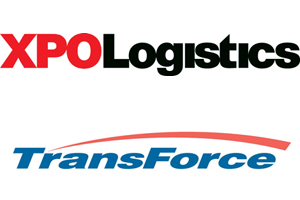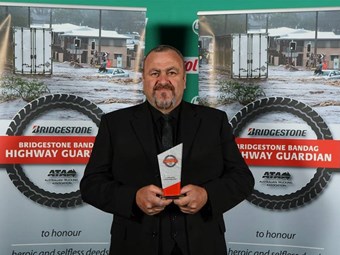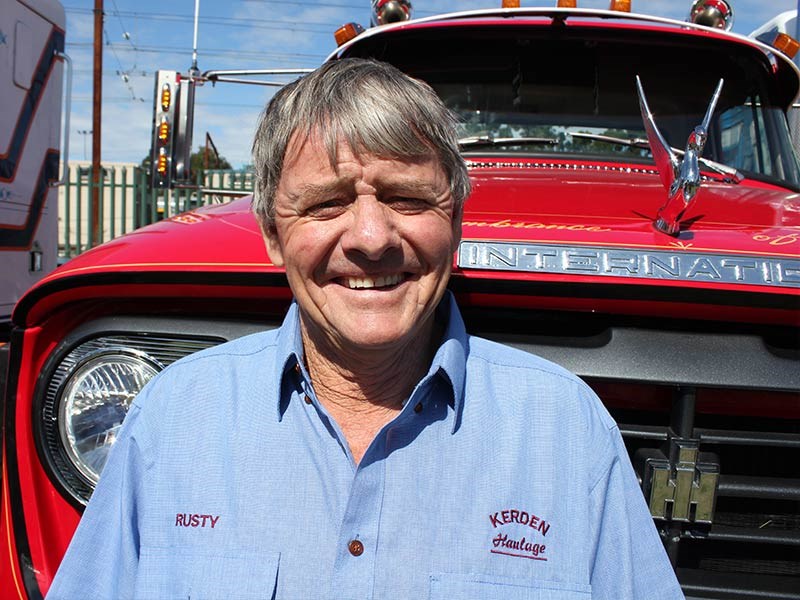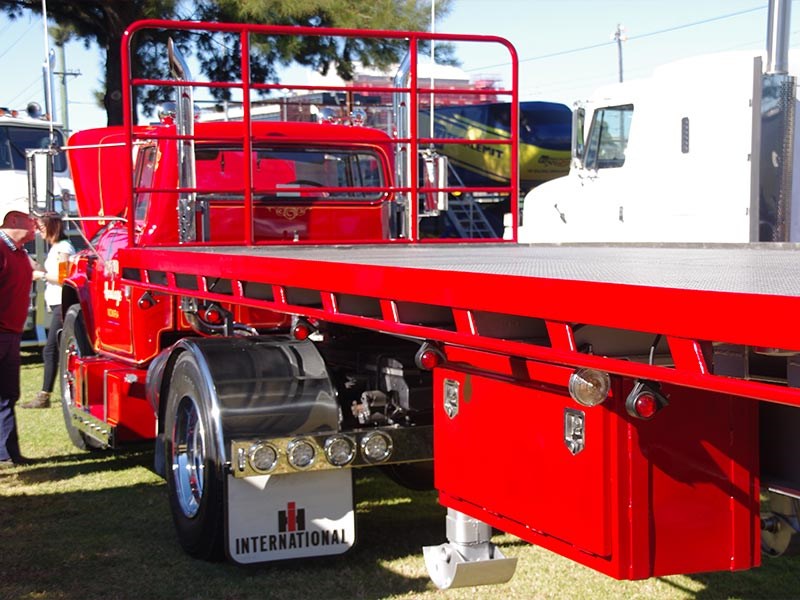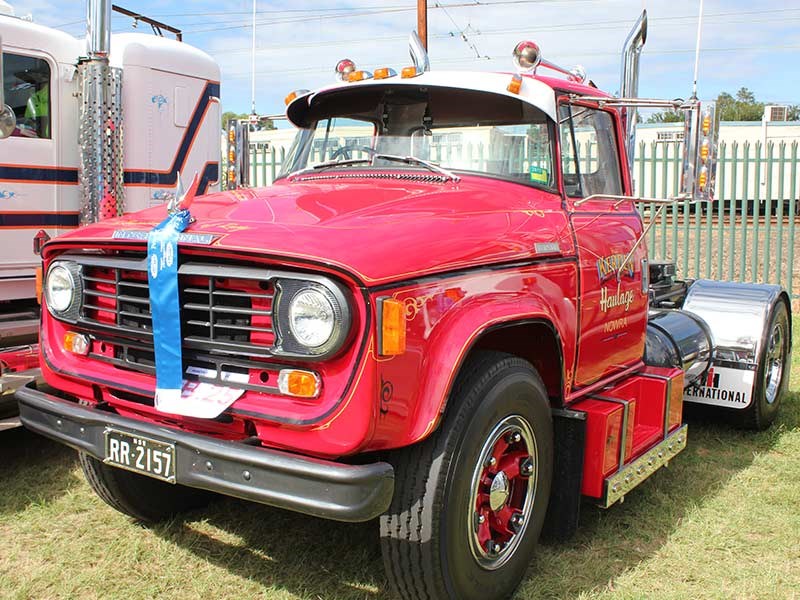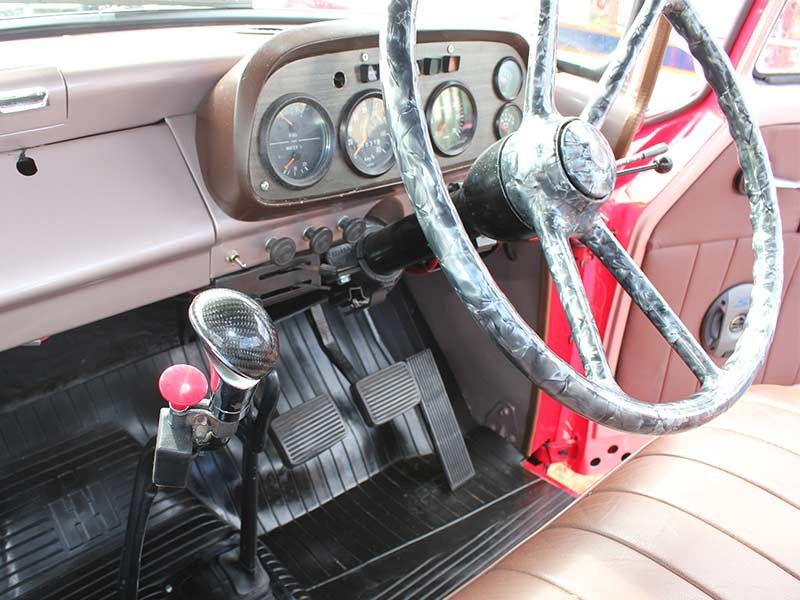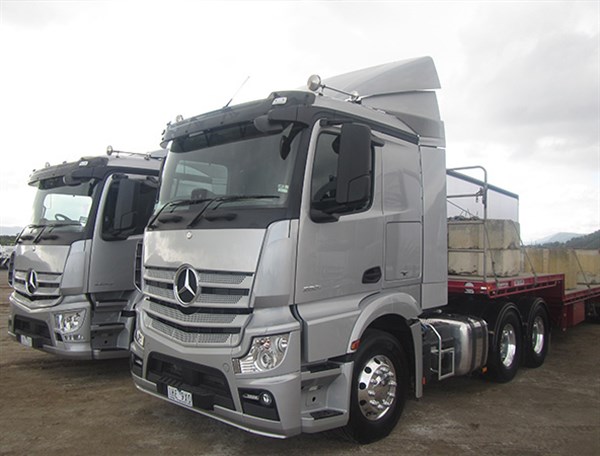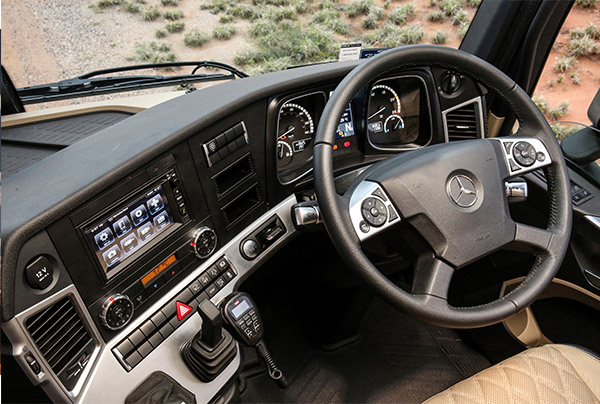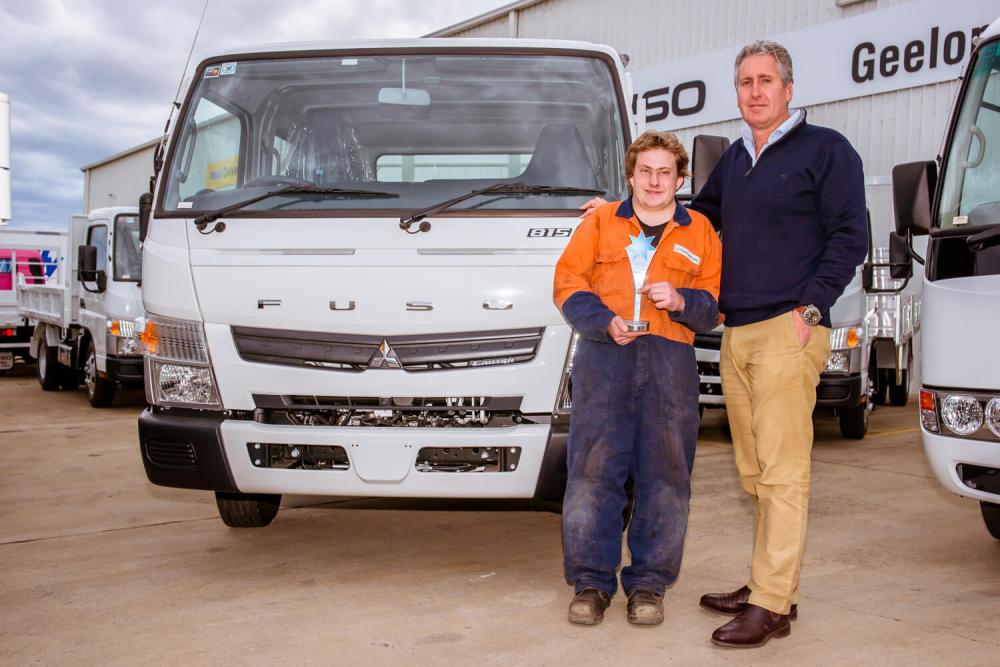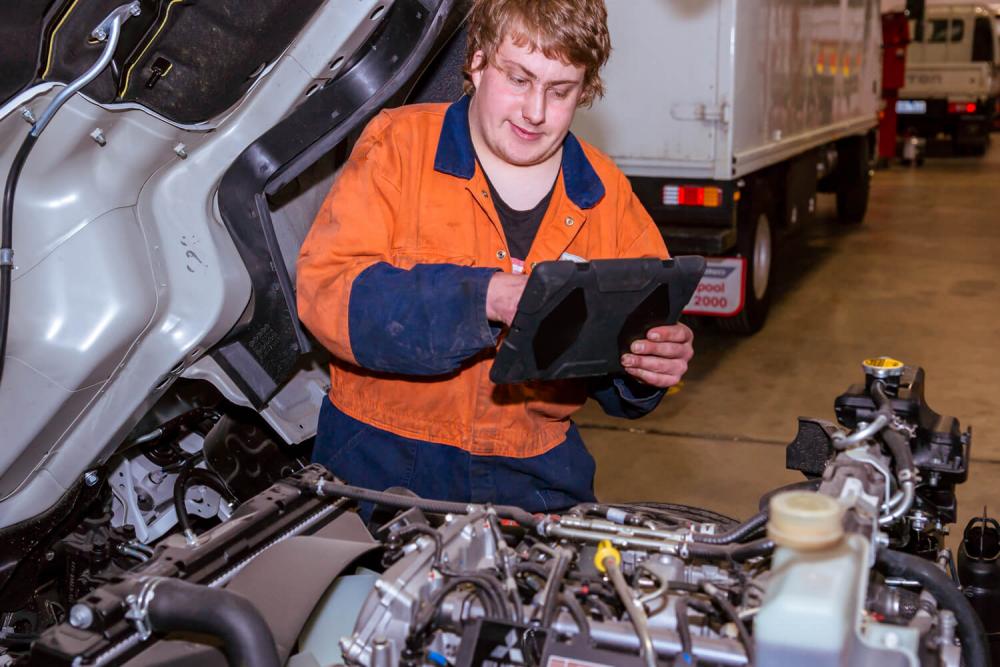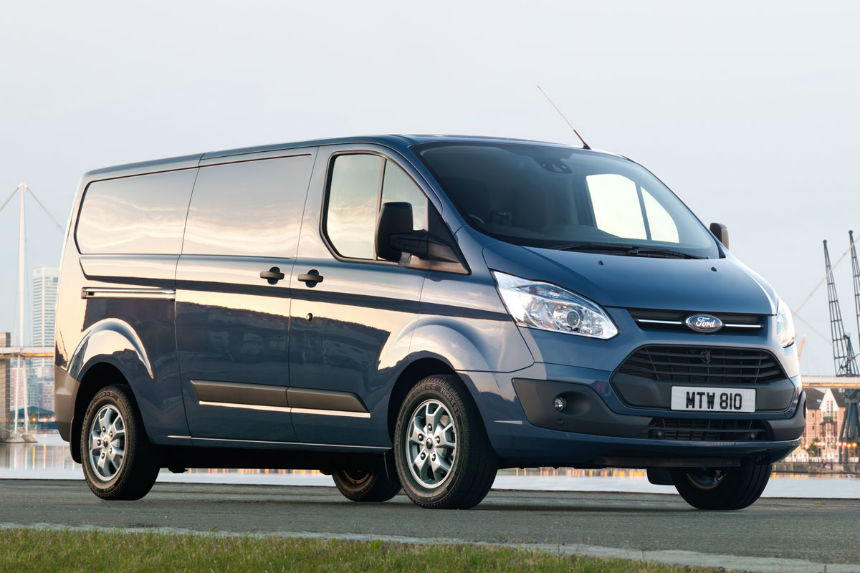
kscarbel2
Moderator-
Posts
17,893 -
Joined
-
Days Won
86
Content Type
Profiles
Forums
Gallery
Events
Blogs
BMT Wiki
Collections
Store
Everything posted by kscarbel2
-
XPO Logistics Sells Con-Way to TransForce for $558 Million
kscarbel2 replied to kscarbel2's topic in Trucking News
XPO Logistics divests North American truckload operation Fleet Owner / October 27, 2016 Company says $558 million 'strategic sale of assets' to TransForce will reduce debt, increase return on capital, improve long-term growth XPO Logistics, Inc. announced that it has completed the sale of its truckload business to TransForce Inc. for approximately $558 million in cash, subject to customary adjustments. XPO says it will use the proceeds from the transaction to pay down debt. The divested truckload operation encompasses some 3,000 tractors, 7,500 trailers and 29 locations that were part of XPO's October 2015 acquisition of Con-way Inc. XPO will continue to offer full truckload services to customers in the United States, Mexico and Canada through its brokerage network. The company points out that it is the second largest freight brokerage provider in the world. Notably, when XPO moved to acquire Con-way, CEO Bradley Jacobs made another second-largest reference: "Our opportunistic acquisition of Con-way will make XPO the second largest provider of LTL transportation in North America, [which is] a $35 billion market," he said in a statement then. Regarding this sale, "TransForce is getting the 19th-largest asset-based truckload carrier in the U.S., a highly experienced workforce, and a presence in the cross-border Mexico freight corridor," Jacobs stated. "We divested these assets to concentrate on growing our value to customers in the areas where we're leaders in the industry: contract logistics, truck brokerage, less-than-truckload, last mile, intermodal, drayage, expedite and managed transportation. "This transaction strengthens our balance sheet and improves our long-term growth profile," Jacobs continued. "In addition to de-leveraging, the sale reduces our annual capex requirements, increases our return on capital, and lessens the cyclicality of our operations." The divested operations, which have been reported as part of XPO's Transportation segment, were expected to generate approximately $10 million of operating income for the remaining two months of 2016, and depreciation and amortization of approximately $10 million. The company will update its financial targets to reflect the transaction when it reports its third quarter results on Wednesday, Nov. 2. J.P. Morgan served as financial advisor to XPO Logistics and Scudder Law Firm, P.C. acted as legal advisor in this transaction, according to XPO. -
XPO Logistics Sells Con-Way to TransForce for $558 Million
kscarbel2 posted a topic in Trucking News
Transport Topics / October 27, 2016 XPO Logistics has sold the Con-way Inc. truckload business to TransForce Inc. for $558 million in cash, a move that involved negotiations between two of the Top 10 companies on the Transport Topics Top 100 list of the largest U.S. and Canadian for-hire carriers. Brad Jacobs, CEO at XPO Logistics, told TT that it received offers since late last year for the smaller unit within the old Con-way Inc. but that none of the offers was attractive until Montreal’s TransForce made an unsolicited offer. “We would’ve been happy to keep growing truckload. We weren’t looking for buyers, but TransForce approached us with an offer that worked for both sides,” Jacobs said. When asked why make the deal now in the tepid economy, rather than wait for conditions to improve, he said the $558 million was a fair price. The CEOs of both companies called it a win-win deal. “This acquisition significantly strengthens TransForce’s presence in the North American truckload landscape with prominent market positions in domestic U.S. and cross-border Mexico freight. The acquisition complements our existing capabilities and gives us access to a diversified and blue-chip customer base,” said TransForce CEO Alain Bédard. “With the deal, we strengthened our balance sheet, we reduced our annual [capital expenditures] and we improved our long-term growth profile,” Jacobs added. The Greenwich, Connecticut-based carrier will use the proceeds from the transaction to pay down $5 billion in debt. The divested truckload operation encompasses about 3,000 tractors, 7,500 trailers and 29 locations offering dry-van services. However, XPO stressed that it'll retain the significantly larger and profitable less-than-truckload business that it purchased from Con-way Inc. in October 2015. “We’re 100% keeping our LTL operation, our fleet, our service center workers, our drivers,” Jacobs said. Meanwhile, TransForce will attempt to move up from the eighth-largest truckload carrier in terms of revenue in the United States and Canada. “We have acquired a high-quality truckload business with a rich heritage and demonstrated solid operating and financial performance. We believe we are investing into the truckload space at a critical time and are well-positioned to benefit from future growth opportunities,” Bédard said. XPO ranks No. 3 on the Transport Topics Top 100 list of the largest U.S. and Canadian for-hire carriers. TransForce ranks No. 10. . -
Volvo Shows Off SuperTruck Entry to Energy Secretary Ernest Moniz
kscarbel2 replied to kscarbel2's topic in Trucking News
Today’s Trucking / October 27, 2016 It's amazing what $40 million will buy you these days. If that seems like a lot to spend on just one truck, consider what the OEMs typically spend on R&D for a new model, or even just a significant upgrade. The $40 million Volvo Trucks spent on its SuperTruck project was an investment in near- and distant-future truck technology that will begin paying dividends for the truck maker and its customers as early as 2017. Today's Trucking was at the Washington D.C. unveiling in September when Volvo presented the truck to the press and the public for the first time. Equipment Editor filed this video report from the scene. . -
RT / October 27, 2016 Russian President Vladimir Putin has rejected allegations that Moscow is trying to meddle with the American presidential vote, saying that the US is no banana republic to allow such a thing. “Does anyone seriously think that Russia can somehow influence the choice of the American people?” asked Putin in Sochi on Thursday. “Is America some sort of a banana republic?” he asked rhetorically. “America is a great state [country]. Correct me, please, if I’m wrong.” The ‘Russian card’ was used during the American presidential campaign to distract the voters from the real problems currently faced by the US, Putin suggested. “But apparently the [U.S.] elite has nothing to say to calm public anxiety” over those issues, he said. “It is far better to distract people's attention to alleged Russian hackers, spies, agents of influence and so on and so forth,” Putin added. Russia and Putin have frequently been mentioned during the US presidential race. Democratic candidate Hillary Clinton accused WikiLeaks, which released emails and documents hacked from Clinton campaign chair John Podesta and the Democratic National Convention, of working with Moscow. According to Clinton, the Russian president “let loose cyber attackers to hack into [U.S.] government files, to hack into personal files, hack into the Democratic National Committee.” She also accused the Republican candidate Donald Trump of being actively supported by the Kremlin and promised to “defend the citizens of this country [the U.S.] and the Russians need to understand that.” Putin also expressed regret that elections in the West have “stopped being an instrument of change.” “It all comes down to scandals, digging up dirt and – I beg your pardon – discussing who has pinched whom, who is sleeping with whom. Well, this is totally out of line,” he said. Putin said the political agenda has become “vapid” in the West, while ordinary citizens’ trust for the ruling class is diminishing. “Frankly, if we look at the programs of different candidates, we can get an impression that they are tailored to the same curves,” he said. Putin criticized US and EU attempts to portray Russia as an aggressive country and enemy of the West. “Fictional, mythical dangers, like the alleged Russian military threat, are constantly being churned out. Indeed, it is a profitable thing. It allows them to expand their military budgets; to expand NATO; to bring the infrastructure of the bloc closer to the Russian border,” he said. “Of course, it’s very nice, and sometimes profitable, to pose as the defenders of civilization… but the fact is that Russia is not going to attack anybody,” Putin added.
-
The adventures of flawed national healthcare
kscarbel2 replied to kscarbel2's topic in Odds and Ends
Obamacare made it illegal to deny care to the sick. Insurance companies still do it Ron Cohen, The Guardian / October 27, 2016 People with pre-existing conditions are still discriminated against. The government shouldn’t allow this to happen For years, insurers dropped sick people from their plans or denied coverage due to preexisting conditions like cancer, keeping them from the care and medicines they needed. The Affordable Care Act (ACA) was supposed to make it unlawful for insurers to refuse coverage to such individuals or charge them more for health insurance. But it is still happening. No longer able to keep patients off their plans outright, insurers have resorted to other ways to discriminate and avoid paying for necessary treatments. Specifically, they have imposed specialty tiers and high copays or coinsurance for prescription drugs that effectively force sick people to delay needed care or to find a different health plan. So much for the end of preexisting conditions. Covering fewer sick patients translates to bigger profits for Big Insurance, but less healthcare for those who need it most. A recent study from Harvard examined insurers’ use of these tactics. They found 12 plans on the ACA exchanges that discriminated against people with HIV by making them pay $3,000 more a year than those in other plans. This work highlights that such action “has the discriminatory effect of discouraging individuals in need of specific medications from enrolling in these plans or of shifting the burden of the cost back to these enrollees”. Harvard’s Center for Health Law and Policy Innovation recently filed a landmark discrimination complaint with the Federal Office for Civil Rights against seven major insurers. The complaint noted that “Unaffordable cost sharing is just as much a barrier to care as outright refusal to cover medications … Left unchecked, these practices will drive individuals out of the health insurance market, leaving them once again without meaningful access to care.” States from New York to Florida have attempted to take action against insurance companies found to be engaging in the practices. The federal government should also take a stand – both under the law and in the spirit of the ACA – to stop these unfair and discriminatory practices. In June, the Centers for Medicare and Medicaid Services (CMS) announced $22m in funding to state insurance departments earmarked toward “implementing … consumer protections including: essential health benefits, preventive services, parity in mental health and substance use disorder benefits, appeals processes, and bringing down the cost of health care coverage (also known as medical loss ratio provision)”. By any standard, “essential health benefits” must include access to needed medications. Yet the CMS language does not explicitly make this point. That should be corrected, as the federal government must make clear that discrimination against patient access to medicines will not be tolerated. As a biotechnology CEO and chair of Bio, the world’s largest association of biotech companies, I spend most of my time working to develop innovative medications and to ensure that patients have access to them. For years, the insurance industry and its allies have deflected attention from their responsibilities by pointing fingers at innovative biopharmaceutical companies, claiming that prescription drugs are the major driver of insurance premium increases. As study after study has shown, that’s simply false. For example, a recent independent study from Avalere showed that just 14% of 2017 premiums will be driven by pharmaceutical prices versus about 73% for inpatient, outpatient and professional services. And keep in mind that innovative prescription drugs actually save the healthcare system money over time through reduced surgeries and hospital stays and curbing of doctor visits. The federal government needs to step up and take action against insurance companies that – while technically barred from dropping people with preexisting conditions – are nevertheless discriminating against them to achieve the same ends. -
Yes, US elections are rigged – but not in the way Donald Trump thinks Trevor Timm, The Guardian / October 27, 2016 Gerrymandering, a time-worn practice, is alive and well in 2016. It skews results, drives down turnout and harms minorities – and we need to do away with it If Donald Trump actually cared about “rigged” elections, he would stop complaining about the demonstrably false “voter fraud” myth he keeps peddling and instead focus on the real problem: gerrymandering – the changing of electoral boundaries for political gain. Of course he’ll never do that, since gerrymandering is a Republican party speciality and the only thing keeping the GOP from losing the House of Representatives this year. All signs point to Trump suffering a rout in two weeks, with Clinton’s chances of victory north of 80 or 90%, according to statistical analysis from both the New York Times and FiveThirtyEight. Donald Trump is the most unpopular candidate in modern history, and in elections past, he’d be dragging the rest of the party to a historic defeat in Congress as well. But despite all this, there’s almost no chance the Republicans will lose control of the House of Representatives this election – or in the one after it – since Republicans in statehouses across the country have fixed the election process by redrawing the congressional district maps in several key states in 2010. They can retain a majority even when Democrats received far more total votes. (The Washington Post has a helpful graphic that explains exactly how gerrymandering works.) Former Salon editor in chief David Daley has a new book out on the subject and described how the Republicans accomplished this seat-rigging feat in a recent interview: "It was a two-part plan. In 2010, they had to take control of all of the chambers. In 2011, they sat down with some of the most skilled mapmakers in the country, and they drew lines with the express intent of using redistricting as a partisan hammer to lock in control of the House for the next decade." The results were dramatic. As Vox’s Andrew Prokop explained this week, “When Americans voted for the House in 2012, Democratic candidates won 1.4 million more votes than Republicans. Yet after the dust settled, the GOP ended up with a 234-201 majority in the chamber.” The liberal blog Daily Kos conducted a comprehensive study of gerrymandering in the 2012 House election and concluding that it “likely cost Democrats a net of 25 seats in 2012, more than the 17 they needed to claim a majority that year, and far more than the eight they actually did gain.” Take Ohio, for example, which is generally a battleground state in presidential elections and is pretty evenly split between Republicans and Democrats. Because of the radical redistricting Ohio Republicans implemented in 2010, they were able to carve up the map so that they have 75% of Ohio House seats. It’s so bad, a recent study showed you can predict the results of any race in Ohio with a virtual certainty just by knowing the political makeup of a particular district. You can see how gerrymandering can manipulate election results in the Guardian’s excellent look at “the nation’s most gerrymandered district” in North Carolina, which was so narrow at one point state representative Mickey Michaux, a Democrat from Durham, once said: “If you drove down the interstate with both car doors open, you’d kill most of the people in the district.” The United States district map would look radically different if computers, rather than partisan humans, drew the maps based on US census data. That’s why it’s encouraging that President Obama will reportedly make redistricting reform a central part of his post-presidency plans. Given the extent to which it affects our elections, it’s an underreported problem – and until it becomes a national scandal, it will persist. Gerrymandering has several effects beyond just making it easier for one party to control the majority of seats in the House. It drives down voter turnout, since so many elections are lopsided and unopposed. It increases polarization and deadlock in Congress since a lot of congressional members don’t have to worry about a serious challenger from the other party. It also deprives minority groups of political power. It isn’t a new problem; the practice is almost as old as the country itself, and Democrats have engaged in it as well. But no one has perfected it as well as Republicans did in 2010, and until the practice is done away with once and for all, democracy will suffer.
-
Mark Fields is a nice guy. I'm glad he's at Ford. However, I don't want him as CEO, and remain perplexed as to how he was chosen for the position.
-
Ford Reports Lower Profit The Wall Street Journal / October 27, 2016 Ford Motor Co.’s third-quarter earnings fell 56% compared with the same period in 2015, hurt by hefty recall expenses, weaker U.S. shipments and product-launch costs in its core North American operation. The No. 2 U.S. auto maker on Thursday reported nearly $1 billion in profit for the period ended Sept. 30, down from $2.2 billion in the same period a year earlier. The prior-year’s performance benefited from high prices Ford was commanding for the then-newly redesigned F-150 pickup truck. The Dearborn, Mich., auto maker said operating profit was 26 cents a share, topping analysts’ expectations for 20 cents a share as recall expenses and marketing costs were lower than investors’ anticipated. Still, results were hit by $600 million in costs tied to faulty door latches. Revenue declined 6% to $35.9 billion as weaker sales in the U.S. contributed to a global shipment drop. The company said it had $2 billion in cash outflows in the third quarter, and expects to return to positive cash flow in the fourth quarter. While Ford remains profitable, third-quarter sales jitters underscore concerns about Detroit’s ability to continue increasing margins or sales amid a U.S. market plateau. While results at smaller U.S. auto makers Fiat Chrysler Automobiles NV and Tesla Motors Inc. recently showed their potential for future earnings or revenue growth, General Motors Co. and Ford posted deteriorating North American margins during the quarter even as U.S. demand for trucks and SUVs surged. Ford reaffirmed 2016 guidance of $10.2 billion adjusted pretax profit and reiterated its full-year North American margins will be below that of 2015. The auto maker plans to further trim production in the fourth quarter to reflect softer U.S. volumes. “What’s happening in the company is really what’s happening in North America,” said Ford finance chief Bob Shanks. North American margins exceeded 12% of sales in the third quarter of 2015, but fell to 5.8% in the most recent quarter, or 8.4% excluding recall costs. Coming off 2015’s record pre-tax profit, Chief Executive Officer Mark Fields is combating weak conditions in South America and a weaker outlook in the U.K. resulting from the country’s vote in June to exit from the European Union. Rising sales and profitability in China and an uptick in European profits helped counter the quarter’s 57% drop in North American profit, which accounts for more than 90% of Ford’s earnings. Its operating income in North America last quarter was $1.3 billion, compared with $2.9 billion in the same period last year. Earlier, the auto maker issued a weaker outlook in the U.S. for its second half and said it expects industry sales to continue falling through 2017, putting pressure on executives to lift earnings in overseas operations. In Europe, Ford posted an operating profit of $138 million compared with $9 million in the same year-ago period, sidestepping currency declines and softer sales in the U.K. tied to the Brexit impact. Ford took steps to counter industry weakness in the U.K, including raising new-car prices 2.5% in September and reducing dealer stock. The company expects Brexit to lead to $140 million in negative earnings impact in the second half of 2016 and to shave another $600 million from earnings in 2017. In Asia Pacific, Ford recorded a $131 million operating profit, up from $22 million a year ago, as its sales in China surged during the quarter. Margins rose in China in the third-quarter to 13.4% versus 12.7% a year ago, but Ford sells a fraction of the volume in China compared with what it sells in the U.S. Ford’s operating losses in South America deepened to $295 million, from $163 million in the third quarter a year ago, but Mr. Shanks said the market there is showing signs of bottoming out and the company expects a turnaround next year.
-
Does America Know What It's Doing in the Middle East? Christopher Preble, The National Interest / October 26, 2016 The United States has been heavily involved in the greater Middle East, including the Persian Gulf, parts of North Africa, the Horn of Africa and Afghanistan in Central Asia, for over forty-seven years. The U.S. foreign policy establishment seems determined to stay there for at least another half century, despite that fact that our strategic objectives are unclear at best, and our ability to achieve much beyond short-term military successes has proved wanting. U.S. officials established an active military presence in the Persian Gulf in 1979 following the overthrow of the Shah of Iran, and the Soviet invasion of Afghanistan. Subsequently, the worst-case scenarios were averted—the collapse of the House of Saud, a Soviet victory in Afghanistan, and Saddam Hussein in possession of Kuwaiti oil fields. But Americans’ memories are also punctuated by tragedies and setbacks, from the Beirut bombing and the Mogadishu firefight, to the more recent disastrous war in Iraq and the ongoing fight against ISIS. These episodes often overshadow the day-to-day courage and sacrifice, as well as the individual acts of heroism, by the members of the U.S. military tasked with bringing order to a notoriously disordered part of the world. Taken together, the missteps and follies evoke manager Casey Stengel’s question of the members of the 1962 Mets: “Can’t anybody here play this game?” The difference, among many, is that the Mets were an expansion club, cobbled together from the castoffs from other Major League Baseball teams. The U.S. national security state of 2016 is a well-established juggernaut, nearly seven decades in the making. A team built for both speed and power, and that is able to draw on the vast wealth and talent of the United States of America, shouldn’t strike out so often, or make so many errors in the field. And yet it does. Andrew Bacevich connects the dots in his latest book, America’s War for the Greater Middle East. A recurrent theme not covered in the review is the treatment of U.S. military officers who had the misfortunate of being on the wrong end of various tragedies. These include the 1983 Marine Barracks bombing in Beirut, the 1987 missile attack on the USS Stark, the 1996 attack on the Khobar Towers in Saudi Arabia and the 2000 suicide boat attack on the USS Cole in the Gulf of Aden. In each case, the post-incident reviews singled out the local commanders—Marine Col. Timothy Geraghty, the Stark’s Capt. Glenn R. Brindel, Air Force Brig. Gen. Terry Schwalier, and Navy Capt. Kirk Lippold, respectively—for failing to do more to prevent the attacks; the civilian policymakers responsible for putting U.S. military personnel in such vulnerable places, and in the service of dubious or ill-defined objectives, evaded accountability. Bacevich, a graduate of West Point and a Vietnam combat veteran, doesn’t conceal his contempt for this double standard. He also shows that even clear-cut military victories have repeatedly failed to produce enduring strategic gains for the United States. Operation Desert Storm, the U.S.-led mission that evicted Iraqi forces from neighboring Kuwait, was portrayed as a victory so decisive that it paved the way to more frequent military interventions in the future. But George H. W. Bush, who allowed himself moments of euphoria, admitted to his diary that the war had not, in fact, produced “a clean end.” Bacevich observes, “within Iraq, U.S. intervention had produced conditions conducive to further violence and further disorder.” Twelve years later, the second Iraq War removed the murderous tyrant but unleashed bedlam. Similarly, in Afghanistan, a well-executed plan drove Al Qaeda out of the country, and their Taliban hosts out of power, but did not bring peace or order. And yet a number of George W. Bush administration officials, foreign-policy elites and hawkish pundits believe that we had won in Iraq, and that victory is attainable in Afghanistan. Their faith in the efficacy of U.S. military power is as strong now as when Charles Krauthammer declared in January 2002 that “Afghanistan demonstrated that America has both the power and the will to fight, and that when it does, it prevails.” From this logically flows the corollary, so evident in the narratives surrounding the United States’ many failures then and since: if we don’t achieve our objectives, it’s because we lacked the will to win. Alas, it’s not that simple. It should be obvious by now that more U.S. troops deployed and more patience on the part of the American people will not fix what ails the region. More effort is meaningless if you’re playing with a flawed game plan. Which brings us back to Casey Stengel. As the Mets compiled more losses than any other team in MLB history in 1962, he wondered aloud why they played so badly and what, if anything, he could do to fix it. Unfortunately, no such soul-searching is evident among the DC establishment, in part because there is no accountability. They continue to write columns for major newspapers, and they comprise the army of talking heads who grace our televisions 24/7. The American people seem generally disinterested in distant battles or in challenging those responsible for waging them. That’s a recipe for continued disappointment—and occasional disaster. Christopher A. Preble is vice president for defense and foreign policy studies at the Cato Institute.
-
Test Drive: New Mercedes-Benz Actros Struts its Stuff
kscarbel2 replied to kscarbel2's topic in Trucking News
Commenting on the video in the above post, Steve Brooks, I feel, is the best heavy truck journalist in the world......bar none. With almost 40 years in the truck industry, few journalists know trucks as well as Steve. When you watch his videos, he presents in a courteous, respectful and professional manner, and his truck knowledge is immediately evident. Steve is a super human being who genuinely is 100 percent sincere. He never bad talks anyone or any product, because he's one of a dying breed of journalist whose integrity is above doing that. And of course, we in the video witness the efficient "B-double" trailer combination in use. -
The Australian Trucking Association talks brakes
kscarbel2 replied to kscarbel2's topic in Trucking News
Optimising brake performance explored at TMC 2016 Prime Mover Magazine / October 26, 2016 Industry experts have given visitors at this year's ATA-ARTSA Technical & Maintenance Conference (TMC 2016) in Melbourne, valuable best practice methods into managing brake system maintenance and compliance. One of the most significant sessions came on the event’s first day with Bob Woodward – Project Manager at New South Wales-based Ron Finemore Transport – who joined representatives from transport equipment providers, SAF-Holland, Haldex and BPW Transpec, to discuss achieving brake compatibility and getting the best performance from braking setup. As part of his presentation, Woodward dispelled the notion that achieving compatibility is anything less than operating within constraints, until a performance compromise can be reached. He also explained that the Australian Design Rules (ADR) have 'tram tracks' of compatibility, with brake performance lying between two, upper and lower guidelines, considered 'compatible'. Meanwhile, Ian Thomson, Engineering Manager at BPW Transpec, pointed to the myriad factors affecting the development of brake compatibility regulation – in order to cover the whole spectrum of conditions and systems guidelines must account for both disc and drum foundation brakes in several brands, differing type sizes and use in singles, B-doubles and other truck configurations as well as booster and slack adjuster settings. “Australia presents a particular challenge – not only is its fleet of prime movers sourced from all over – Europe, the US, Japan and Australia, it is also in serious need of an update, with an average age of 11.5 years,” he noted. When it comes to ensuring your fleet is compliant, both with legal requirements and safety regulations, Thomson recommended that keeping a conversation going with an expert on the type of brakes used. “Even if you’re just changing the tire size, you need to redo your calculations,” he noted. “A miscalculation could result in an accident, so fleet owners should approach the manufacturer of the brakes or a dedicated brakes consultant.” Thomson also referred to the Australian Trucking Association's (ATA) recently released Technical Advisory Procedure (TAP) as an ideal guide for effective brake adjuster set up, since it can help fleet owners with maintenance and compliance. Developed in partnership with the ATA, Australian Road Transport Suppliers' Association (ARTSA), Truck Industry Council (TIC), the Commercial Vehicle Industry Association of Australia (CVIAA), the Heavy Vehicle Industry Australia (HVIA) and the Australian Livestock and Rural Transporters Association (ALRTA), the TAP can be a valuable tool for identifying compatibility and ensuring safe practice protocols are followed, according to Thomson. -
Owner/Driver / October 27, 2016 The Bridgestone Bandag Highway Guardian Award has been given to a truck driver who showed bravery in the face of a tragic series of events The 2016 Bridgestone Bandag Highway Guardian award has been handed to Victorian truck driver Renzo Bruschi in recognition for his efforts after a multi-vehicle collision on May 24. The tragic incident, which claimed the life of one motorist, involved 10 vehicles, one of which was being driven by 52-year-old Bruschi. Recalling the events of the morning, the 30-year industry veteran says a petrol tanker carrying 60,000 litres of fuel rolled on the Calder Freeway, leaving a devastated scene. Recognising the need for action, Bruschi leapt from his vehicle and headed straight to the driver of the tanker who was calling for help. "There was fuel and smoke everywhere; I just thought it was not a question of if this was going to blow but more a question of when, so I just sprang into action to help get him out as soon as possible before something happened," he says. "The tanker was on its side and I initially tried to break the windscreen; and it shattered - but didn’t break, so I had to climb up and pull him out through the door which was facing skyward." After assisting the driver in reaching a safe location, Bruschi then went to check on the occupants of an overturned car that had fuel running through it. Upon helping the upturned female through her car’s back passenger door, he went to look at the other vehicle that was crushed but unfortunately came across a person already deceased. "I just did not stop to think at that point, I just did all I could to help," he says. "I hope something like this never happens again, but if I did, I know I’d do the same all over again." Bruschi was presented the award during the Castrol Awards Dinner during the Technical and Maintenance Conference held in Melbourne on October 25. More-than fitting the award’s criteria for professional truck drivers who go above and beyond in the course of their work, Bridgestone Australia and New Zealand managing director Andrew Moffatt says he is proud to call Bruschi the highway guardian for 2016. "Renzo’s actions say a great deal about the kind of person he is," Moffatt says. "In his mind, putting other people’s lives before his own wasn’t a unique or special act – it was just something he had to do. "To the community, and specifically those he helped that day, Renzo heroism is without question and we are extremely proud to call him our latest guardian of the road." Sentiment echoed by Australian Trucking Association chair Noelene Watson. "Renzo responded to an overwhelming situation with selfless courage," she says. "He acted quickly and fearlessly in the face of danger, getting as many people to safety as he could and offering them great comfort. "Our thoughts are with the family and friends of the man who lost his life as a result of this tragic event." .
-
Owner/Driver / October 27, 2016 Dennis ‘Rusty’ Radburn’s 1974 D1910 International has sentimental significance for the NSW south coast operator, writes Steve Skinner Dennis Radburn has been a truckie all his life, and before him his late father Russell was a truckie from the age of 17. In turn third-generation Radburn truckie, Damien, now runs Kerden Haulage from its base at Nowra on the NSW south coast. Spanning the three generations is this lovely looking old D1910 International, which believe it or not was a highway hero in its day. Dennis and Russell used to run similar old Inters, but this one was recently restored after being bought from a bloke at Coffs Harbour on the NSW north coast. The emotional tie comes in with the personalised rego plate – RR 2157 – which belonged to Russell Radburn, the first ‘Rusty’ in the Radburn lineage. Russell was a single-truck owner-driver all his career. Labour of love The 1974 D1910 was restored in Kerden Haulage’s own workshop, after being stripped back to the chassis rails. It boasts a 392 International V8 engine, which equates to 6.4 litres capacity in metric lingo. Power in these old bangers was about 190hp (140kW) with torque of about 300ft-lb (407Nm). That’s not much to be pulling a bogey trailer by current standards, but the single drive classic is only rated to 24 tonnes GCM (gross combination mass) anyway. Not that the Inter pulls its Loadmaster trailer much. The combination has been to the Penrith Working Truck Show, the Sydney Classic and Antique Truck Show, and the Clarendon Classic. Rusty is gearing up for next year’s Haulin’ the Hume, along the old Hume Highway between Sydney and Yass. The prime mover does a little bit of yard work if necessary, but Rusty avoids even that. "I don’t want to get it dirty," he declares. There’s a lot of other gear in the Kerden fleet, which boasts 30 prime movers – mostly Kenworths, including a new T950 ‘Legend’ – and 54 trailers in a wide variety of types since the company diversified from specialising in brick cartage. Rusty started the company with a single truck in 1992, with his wife Kerry – hence the name ‘Kerden’. The couple have been together since they were 14 years old. Kerden does everything from interstate line-haul with depots in Sydney, Melbourne, Brisbane and Adelaide, to local work around the south coast and southern tablelands. Trailers include tautliners, flat-tops and high-cube tippers. Rusty recently turned 64 and still works every day except Sunday. "Everyone says what a hard industry it is, but I think if you put in the hard yards you get the return out of it," he says. "It’s a 24/7 thing, you never get away from it." Wife Kerry has also always worked in the business, and has truck and forklift licenses to prove it. "I’ve never whinged about any of it," she adds. Damien’s wife, Stephanie, is following suit in helping her husband run the business. And now there could be a fourth-generation Radburn truckie in the making. "Our granddaughter Imogen sits up with Damien," Kerry says. "She loves it." TRUCK OWNER: Dennis ‘Rusty’ Radburn COMPANY: Kerden Haulage TRUCK: 1974 International D1910 ENGINE: International V8 392 (6.4 litre) TRANSMISSION: 5-speed Fuller REGULAR RUNS: Shows and yard horse .
-
Test Drive: New Mercedes-Benz Actros Struts its Stuff
kscarbel2 replied to kscarbel2's topic in Trucking News
Test drive: New Mercedes-Benz Actros hits the NT Steve Brooks, Trade Trucks AU / October 27, 2016 Mercedes-Benz is on the cusp of an entirely new era in the Australian truck market following the much anticipated release of an extensive range of bold new models. Launched in Far North Queensland last week following intensive test programs with Australian operators, along with what is said to be a thorough shake-up of Daimler Trucks service and support systems, the new trucks have the distinct potential to put the Benz brand squarely back in the spotlight with Australia’s truck buyers. Over the past decade and more, Mercedes-Benz has struggled for market prominence with the previous Actros range largely failing to strike a chord with the majority of truck operators in this country. However, with four new in-line six cylinder engines from 7.7 to 10.7, 12.8 and 15.6 litres spanning 350 to 630 hp, and four well-equipped cab variants, this new line-up has next to nothing in common with the former Actros family other than the three-pointed star on the grille. Indeed, early impressions after short stints behind the wheel of several models between Cairns and Townsville left no doubt that these trucks represent an exciting and hugely positive dimension for Mercedes-Benz. Predictably, top-shelf 630 hp models were completely untroubled towing loaded B-double sets but the lively and determined performance of a couple of demo units powered by the 10.7 and 12.8 litre engines were the real surprise packets on the short run down Queensland’s far north coast. Meantime, company executives are making strong claims for enhanced fuel economy across the new range, citing a seven percent improvement over the V6 and V8 engines in the superseded Actros range. While Mercedes-Benz is initially focussing on the introduction of prime mover models, rigid units will become available in the second quarter of 2017 with off-road derivatives to follow later in the year. The importance of the new range to the current and future aspirations of Daimler Trucks Australia was emphasised by managing director Daniel Whitehead immediately after the introduction of the boldly styled range to customers, dealers and media in Cairns. "There’s no question, this is the most important range of trucks for us in more than a decade," Daniel enthused. "This is the moment we’ve been working towards for four years. In the cab-over prime mover market, we can now compete with anyone. And I mean anyone," he asserted. As for sales expectations, a determined Daniel Whitehead said, "When you think Volvo currently has more than 15 percent of the heavy-duty market, and I’m absolutely convinced their trucks are no better than what we’re now introducing, then surely our goal can’t be anything less than 10 percent in the relatively near future. "All the way along," he continued, "we’ve been determined not to make the mistakes of the past, particularly bringing new trucks into this market without an extensive Australian test program, and in the process taking a long, hard look at our own service and support systems." According to Mercedes-Benz executive Andrew Assimo, 20 trucks and 35 customers accrued more than one million kilometres of local evaluation on every major freight highway in the 18 months prior to the launch of the new models. Backing the company’s confidence in the new line-up, every truck in the range other than a couple of models aimed at extreme-duty roadtrain roles comes with a two-year bumper-to-bumper and 800,000 km driveline warranty. For the next 12 months, Mercedes-Benz is also offering 500,000 km/five years free scheduled servicing on the new trucks. "I know we’ve taken the long road in bringing these trucks to the Australian market but we weren’t prepared to take shortcuts even though the trucks have been doing really well in Europe," Daniel Whitehead commented, pointing out that the new range was first introduced in Europe around five years ago following a test program said to be the longest and most intensive in the commercial vehicle history of Mercedes-Benz. "We’ve been something of a sleeping giant in this country for a while now and like I said, we’ve taken the long road to make sure we had the new trucks right. But today’s the start, the moment we set a new standard and where the changes become tangible." Model Range The new range is perhaps best revealed by the different configurations starting with … 4x2 Prime Movers This group starts with the 1835 model, powered by the 7.7 litre OM936 engine with peak outputs of 260 kW (354 hp) and 1400 Nm (1033 lb ft) of torque. It is a Euro 6 engine stirring through an overdrive eight-speed PowerShift automated transmission. The 1835 comes with what Mercedes-Benz calls the M-ClassicSpace cab which is a low roof 2.3 metre wide structure with a 320 mm high engine tunnel. It is the only non-sleeper cab in the range but like all models comes with standard features such as electric mirrors and windows, central locking, air-suspended driver’s seat, automatic wipers and headlights, air horns and a driver’s side airbag. Predictably, stopping power in all the new models comes from electronically controlled disc brakes with ABS anti-lock, ASR anti-skid functions and a raft of standard safety features. Vitally, all new models also come with what Benz says is a ‘high performance engine brake’. After the 1835 come single-drive models called the 1840, 1843 and 1846, all sporting a GCM rating of 45 tonnes and each powered by the lively 10.7 litre OM470 Euro 6 engine with respective outputs of … 290 kW (394 hp) and 1900 Nm (1401 lb ft). 315 kW (428 hp) and 2100 Nm (1549 lb ft). 335 kW (455 hp) and 2200 Nm (1623 lb ft). While these models share the same axles, brakes and driveline components as the 1835, they instead use a 12-speed direct-drive PowerShift automated shifter. They’re also available with two cab types – the M-ClassicSpace or the L-Classic Space. The ‘L’ is basically a sleeper cab version of the ‘M’, with the same standard features except for the addition of a 750 mm bunk. 6x2 Prime Movers Also punched by the 10.7 litre OM470 engine are a pair of 6x2 models, each called the 2543 and differing from each other only in the choice of either the non-sleeper M-cab or its bunk brother the ‘L’. Powered by the 315 kW (428 hp) version of the 10.7 litre OM470, they also run the 12-speed direct-drive PowerShift transmission. 6x4 Single Trailer Regional Prime Mover This is where the new Benz range gets particularly busy and where Daimler will be striving to make significant inroads in shorthaul and regional single trailer roles. There are three distinct models in this group – the 2643, 2646 and 2651, and like their 6x2 counterparts, each is available with the 2.3 metre wide ‘M’ cab or the ‘L’ sleeper cab. While the ’43 and ’46 are powered by the 315 and 335 kW (428 and 455 hp) versions of the OM470 engine, the 2651 uses the 12.8 litre OM471 engine with 375 kW (510 hp) and top torque of 2500 Nm (1844 lb ft). All three members of this group have a GVM rating of 26 tonnes but GCM capacities vary with each model’s power output. The 2643, for instance, has a GCM of 45 tonnes whereas the 2646 and 2651 are rated to 62.5 and 70 tonnes respectively, suggesting this latter two could also be suitable for PBS truck and dog roles and shorthaul B-double duties. Behind each engine is a 12-speed PowerShift direct-drive transmission while under the rear is a hypoid drive tandem sitting on an eight-bag air suspension. 6x4 B-double Prime Mover In linehaul terms, this is the big end of the business and Mercedes-Benz appears to have done its homework very well with a versatile model range supported by an extensive options list. For starters, there are two versions of a model called the 2653 which have the 12.8 litre OM471 engine boosted to peak outputs of 390 kW (530 hp) and a gritty 2600 Nm (1918 lb ft) of torque. Separating the two models is the choice of cab; there’s a version of the 2.3 metre wide L-ClassicSpace sleeper with the engine tunnel protruding just 170 mm into the cab or there’s the higher and wider top-shelf L-StreamSpace cab with a completely flat floor. Whatever the cab choice though, both 2653 models have a GCM rating of 70 tonnes and stir through a direct-drive 12-speed PowerShift automated shifter. Up the scale are the 2658 and the 2663, both with standard GCM ratings of 90 tonnes. Each model comes with the premium 2.5 metre wide cab and each is powered by the 15.6 litre OM473 engine, the only power plant in the new range available with the choice of Euro 5 or Euro 6 emissions standards. Peak outputs of the 2658 are 425 kW (578 hp) and 2800 Nm (2065 lb ft) while the 2663 delivers 460 kW (625 hp) and a hill-crunching 3000 Nm (2213 lb ft) of torque. Coping with the potent torque outputs of the 15.6 litre engines is a heavy-duty overdrive PowerShift transmission. 6x4 Roadtrain and Heavy-Duty With standard GCM ratings of 106 tonnes and one unit – the 2763 model – capable of being rated up to 160 tonnes, the three models in this group are obviously the heavy hitters of the Benz bunch. They are the 2663, the 2763 and the 3358, with all powered by the OM473 engine stirring through a 16-speed double-overdrive derivative of the PowerShift automated box. Obviously enough, the two ’63 models are punched by the 460 kW (625 hp) version of the 15.6 litre engine whereas the 3358 gets the 425 kW (578 hp) rating. Both the ‘63s have the premium StreamSpace cab while the 3358 has the 2.3 metre wide ‘L’ sleeper with the 170 mm engine tunnel height. These three are the only models in the new range fitted with hub-reduction rear axles. Future Focus Yet the arrival of the new Benz models also fuels speculation that Freightliner’s Argosy has just a few years to run before Daimler Trucks North America shelves all investment in cab-over production to concentrate solely on an entirely new range of Cascadia conventionals, including dedicated righthand-drive models. Asked if the new Benz range will be the only premium cab-over offering from Daimler Trucks Australia within two or three years despite the fact that Argosy still accounts for up to 30 percent of Freightliner sales in Australia, a cautious Daniel Whitehead said simply, "My expectation is that the new Mercedes-Benz range will be our only cab-over flagship sometime in the future." On the relatively poor market penetration of Daimler’s three brands (Freightliner, Fuso and Mercedes-Benz) in the heavy-duty truck segment compared to corporate rivals Volvo Group Australia (VGA) and Paccar, he conceded that current results are less than satisfactory. "Sure, I’m not satisfied with Daimler’s overall percentage but I’m absolutely convinced this new Mercedes-Benz range is the first step in turning that around," he said firmly. "But as we all know, it’s not just about having good trucks. Service and support are critical and while we’ve made sure we have the new trucks right, we’ve also spent a lot of time and effort improving the after-sales aspects of our business with programs like ‘Elite Support’. "It’s a complete dealership and workshop initiative and the intention all the way along has been to ensure we’re providing the best service to our customers nationally. "It all starts now with these new trucks," Daniel Whitehead concluded. . Video – https://www.tradetrucks.com.au/product-news/1610/new-mercedes-benz-actros-launch . -
Power Torque Magazine / October 26, 2016 Chris Linahan, age 19, is deaf and communicates using Australian Sign Language called Auslan. He is in the second year of his diesel mechanical apprenticeship at Geelong Fuso, where he has quickly become part of the team. Chris took to the stage at a recent black-tie event when Fuso Geelong and employment provider MatchWorks took out the inaugural Innovation in Disability – Team Award at the prestigious National Employment Services Association (NESA) National Employment Awards for Excellence. Although he admits he suffered from stage fright, Chris managed to explain how much he enjoys his role at Fuso Geelong and how he goes on about his job just like anyone else. “I just like working with mechanical things,” Chris says. “I very much enjoy working at Fuso Geelong. There is plenty of work to do, it is certainly busier than where I have worked in the past,” he says. “The team I work with is really great.” Several of his workmates have learnt Auslan in order to communicate and Fuso Geelong dealer principal, Richard Furnari, will also take up lessons soon. Chris employs an Auslan interpreter, Therese Lewis, who comes to the workshop two to three times a week to interpret interactions between the team. He is also able to communicate with other workers and customers by using a special iPad app developed by Fuso Geelong. “This way, Chris can report to customers,” Richard says. “We want him to report the condition of a truck and any problems that he has seen to the customer and the customer can give him the instruction to fix those. This way he has got the independence in the workshop; he doesn’t need a second person to do it for him,” he says. Chris is grateful for the opportunity to show what he can do for Fuso Geelong, which was not put-off by the fact he is deaf. “I am really good at working on trucks and that notion that I couldn’t do it because I am deaf is just silly really,” he says. Chris is able to use his sense of feel in the workshop and can tell if a truck is approaching by picking up on vibrations coming through the concrete slab. Feeling vibrations also allowed him to tune motorbikes in a previous job. Chris is a car and bike enthusiast and spends much of his free time working on a rock-crawling Ford Maverick 4WD, which he takes camping, and also drives a beloved Holden VL Commodore. Chris also rides his trail bike when he gets the chance. Richard is pleased to have been able to give Chris an opportunity in the workshop and views him a valuable member of the team, describing him as a ‘long term prospect’. “It’s fortunate that we are able to make a difference,” Richard says. The Chief Executive Officer of NESA, Sally Sinclair, says Fuso Geelong and MatchWorks are worthy winners of the inaugural Innovation in Disability – Team Award. “This award is a great tribute to Fuso Geelong and MatchWorks, and shows how employers can totally change people’s lives and improve opportunities for people with a disability when they invest the time to create truly inclusive workplaces,” she says. .
-
Ford issues safety recall for certain 2017 Ford Super Duty 6.7-liter diesel Chassis Cab vehicles to replace the adhesive-mounted protective shield Ford Press Release / October 26, 2016 Ford is issuing a safety recall for approximately 180 2017 Ford Super Duty 6.7-liter diesel Chassis Cab vehicles to replace the adhesive-mounted protective shield currently installed on the fuel conditioning module with a bolt-on metallic protective shield. In affected vehicles, inadequate adhesion of the protective shield on the fuel conditioning module may allow it to be dislodged by road debris or water spray. If the protective shield is dislodged, road debris or water spray may force open the drain valve on the module. This can lead to air entering the fuel system or a substantial fuel leak. A fuel leak in the presence of an ignition source may increase the risk of fire. In addition, under certain conditions, significant liquid fuel on the road surface may cause a slip hazard, increasing the risk of a crash. Ford is not aware of any accidents or injuries associated with this issue. Affected vehicles include certain 2017 Ford Super Duty 6.7-liter diesel Chassis Cab vehicles with midship fuel tanks built at Kentucky Truck Plant, March 21, 2016 to Aug. 28, 2016. There are approximately 182 vehicles affected, including 170 in the United States and 12 in Canada. Dealers will replace the fuel conditioning module bottom cover with a metallic protective shield at no cost to the customer.
-
New MAN TGE and Volkswagen Crafter launched at IAA 2016
kscarbel2 replied to kscarbel2's topic in Trucking News
Ford offers an absolutely superb mid-sized van, a competitor to the VW Transporter, that I feel has far better "packaging" than the slightly smaller Transit Connect (available in the US market). Note: The Transit line-up includes 4 models. Besides the full-size Transit van now in the US market, the smallest is the Transit Courier (Courier, a name we all remember attached to Mazda B2000 pickups). Called the Transit Custom (panel van) and Transit Tourneo (window van), it could be the modern day replacement for the sorely missed Chevrolet Astro mid-sized van that was the perfectly-sized backbone of America's service industry. Brochures (UK market) available here - http://www.ford.co.uk/Hidden/BrochuresandPricelists/tabid=tab1?fmccmp=other:cvwc-app:build:header::brochure cta . -
New MAN TGE and Volkswagen Crafter launched at IAA 2016
kscarbel2 replied to kscarbel2's topic in Trucking News
For folks that don't need a van with the Crafter's capacity, the smaller Transporter is available as a panel van, window van, and as a 2- or 4-door cab & chassis. Once again, superb versatility. http://www.volkswagen-commercial-vehicles.com/content/medialib/vwd4/int_vwn/pdf/brochures/latest-brochures-and-flyers/the-transporter/_jcr_content/renditions/rendition.file/web_pdf_tr_katalog_18_kw22_2016.pdf -
New MAN TGE and Volkswagen Crafter launched at IAA 2016
kscarbel2 replied to kscarbel2's topic in Trucking News
FYI, this is the 2006-2016 Crafter that is being discontinued, which was based on the M-B Sprinter. http://www.volkswagen-commercial-vehicles.com/content/medialib/vwd4/int_vwn/pdf/brochures/latest-brochures-and-flyers/the-crafter/_jcr_content/renditions/rendition_1.file/web_pdf_cr_katalog_18_kw22_2016.pdf -
In Europe, the cab & chassis commercial van (2-door or 4-door crew cab) is the equivalent of the U.S. market pickup in the commercial truck segment. While it may not excite for personal use, the European van is applicable to a majority of commercial applications, excels in versatility, and with its fuel-sipping 4- or 5-cylinder diesel engines offers far lower cost-of-operation. It's hard to imagine anything more practical. The new TGE van range is the MAN version of the all-new self-designed Volkswagen Crafter van line-up. Previously, VW was using the Mercedes-Benz Sprinter’s basic architecture under license, and applying a different front fascia, interior and drivetrain. Like the European market Ford Transit, the TGE/Crafter is impressively available with front-wheel, all-wheel or rear-wheel drive, to suit everyone’s needs and preferences. GVW’s from 6,614 lb (3.0 metric tons) to 12,125 lb (5.5 metric tons). Four 2.0-liter diesel engine options rated at 101hp (75kW), 121hp (90kW), 138hp (103kW) or 174hp (130kW). 6-speed manual transmission or 8-speed automatic. . MAN TGE sales brochure - http://www.van.man.eu/van/media/en/contentmedia/doc/business_website_germany/pdf/man_tge_van_launchbroschure_en.pdf MAN TGE technical details - http://www.van.man.eu/van/media/en/contentmedia/doc/business_website_germany/pdf/man_tge_launch_en_technical_details.pdf New (2017) VW Crafter - http://the-new-crafter.com/com/en/ .
-
Trans-Pacific Partnership (TPP) Trade Agreement
kscarbel2 replied to kscarbel2's topic in Odds and Ends
Cummins president openly mixed business and politics http://www.bigmacktrucks.com/topic/47344-cummins-president-promotes-free-trade-agreements/ -
Trans-Pacific Partnership (TPP) Trade Agreement
kscarbel2 replied to kscarbel2's topic in Odds and Ends
To applause and boos, Kerry urges Congress to ratify Pacific trade pact Reuters / October 26, 2016 Failure to approve the Trans-Pacific Partnership trade deal would be a major setback for U.S. interests in Asia as Washington seeks to deepen alliances in the region, Secretary of State John Kerry said on Wednesday, urging Congress to ratify the pact. The 12-nation Pan-Pacific trade deal championed by President Barack Obama has been pilloried by both major-party nominees in the U.S. presidential race, Democrat Hilary Clinton and Republican Donald Trump. While Republicans have traditionally backed free trade deals, Trump has blamed them for U.S. job losses and threatened to rip them up or renegotiate them if he wins the Nov. 8 election. "If we see the TPP rejected, it would be a gigantic self-inflicted wound – a setback to our own interests in the region," Kerry told the Chicago Council on Global Affairs, in remarks that drew a smattering of applause and boos. "It would amount to a conscious turning of our backs on the Asia Pacific at the very moment that we ought to be linking arms – it would be an act that will hurt American workers, slow our economy, hinder our ability to advance the full range of U.S. objectives" in the fast-growing region, he added. Republican leaders have said there is no point in bringing the trade deal for a vote in the "lame-duck" session of Congress after the election. But Kerry urged Congress to approve the deal after the election, saying: "It's the right thing to do for America – and no matter what the loudest voices may be shouting – it is also the popular choice." There are concerns in Washington that failure to pass the TPP would prompt Southeast Asian nations to turn to China and Russia. Kerry said the trade deal was a "litmus" test of Washington's capacity to lead and was necessary if the United States wanted a steady and reliable presence in the region. His comments came amid tensions with China over the disputed South China Sea, increased concerns over North Korea's missile and nuclear weapons programs, and questions over the future of the U.S.-Philippines alliance. -
America’s Opioid Epidemic Associated Press / October 26, 2016 A mother overdosed at the wheel of her car while her baby son sat in the backseat. Erika Hurt was found by police on Saturday shortly after 2pm in Hope, Indiana, still clutching a syringe in her floppy left hand. The 25-year-old's 10-month-old son was crying in the backseat. They were parked outside a Dollar General Store. Hurt was revived and taken to hospital. She was later charged with child neglect and possession of drug paraphernalia. Hart's incident is the most recent in a string involving cars and drugs with children present. Kristin Tippett drove backwards into a Wendy's restaurant while overdosing at the wheel on heroin in Dunbar, West Virginia, on Tuesday. Her son was also in the backseat. Paramedics revived her using Naloxone, the same drug given to Hurt. In Ohio, a couple was found passed out in their car after injecting heroin last week. Taylor Swartzlander, 24, and Haley Kirkendall, 22,were filmed by a bystander as they sat slumped over in the two front seats of their car on October 17. Rhonda Pasek, 50, and James Accord, 47, passed out in their car while overdosing with Pasek's grandson in the back . .
BigMackTrucks.com
BigMackTrucks.com is a support forum for antique, classic and modern Mack Trucks! The forum is owned and maintained by Watt's Truck Center, Inc. an independent, full service Mack dealer. The forums are not affiliated with Mack Trucks, Inc.
Our Vendors and Advertisers
Thank you for your support!


